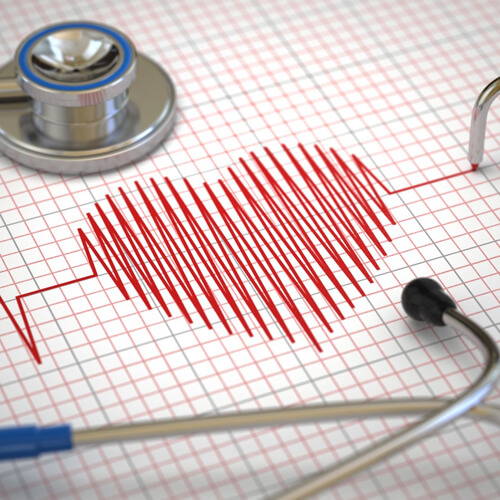
Do you feel like you’re often suffering from back pain? If so, it’s important to talk to your doctor. There are many less invasive or non-invasive options available today before one considers lower back surgery. If your symptoms include a sharp pain along either leg, you may be suffering from sciatica.
What are the symptoms of sciatica?
Sciatica refers to pain caused by pressure on the large sciatic nerve that runs from the lower back down the back of each leg. The good news is that 90% of patients recover from sciatica without resorting to surgery.
Sciatic pain is usually confined to only one leg and typically gets worse when you sit, cough or sneeze. You may also experience numbness, weakness and occasional tingling. These symptoms appear suddenly and can last for days or weeks. Not all backpain results in sciatic pain. Often, back pain is the result of overextending or straining the muscles in the lower back.
Most people who get sciatica are between the ages of 30 and 50. Women are more likely to develop back pain during pregnancy because of pressure on the sciatic nerve from the developing uterus. Other common causes include a herniated disk and degenerative arthritis of the spine. A herniated disc is the most common cause of sciatica.
Disks serve as cushions between the vertebrae of the spine. As you get older, these disks deteriorate due to wear and tear and become more susceptible to permanent injury. When a disk herniates it puts pressure on the sciatic or nearby nerves. About 2% of the US adult population (6 million people) will experience a herniated disk at some point during their lives. While most symptoms will eventually subside, in about half the cases they will persist for 6 weeks or more.
What Causes Back Pain?
Older adults are more likely to suffer from back pain. Natural wear and tear of the vertebrae can lead to a narrowing of the spinal canal and the foramens. (Foramens are small openings in the bone tissue through which nerves pass). This narrowing, called spinal stenosis, may put pressure on the roots of the sciatic nerve. Spinal stenosis is more common in adults over age 60.
A less common cause of back pain is Piriformis Syndrome. The piriformis is a muscle found deep inside the buttocks. It connects the lower spine to the upper thighbone and runs directly over the sciatic nerve. If this muscle goes into spasm, it can put pressure on the sciatic nerve, triggering symptoms. Piriformis syndrome is more common among women.
Sacroiliitis is another less common cause of back pain. It refers to inflammation of one or both of the sacroiliac joints, the spot where the lower spine connects to the pelvis. Sacroiliitis can cause pain in the buttocks, lower back, and may even extend down one or both legs. The pain can worsen with prolonged standing or climbing stairs. Sacroiliitis can be caused by arthritis, injury, pregnancy, or infection.
In rare cases, back pain may result from tumors growing inside or along the spinal cord or sciatic nerve. As a tumor grows, it may put pressure on the nerves that branch off from the spinal cord. If you experience such symptoms for an extended period of time, you should seek medical attention. As a Weisz Concierge Medical member, you will be seen and diagnosed immediately, so you are able to enjoy relief quickly and safely.
Diagnosing Lower Back Pain
During your examination, Dr. Weisz will determine the causes of your back pain. She will ask you how the pain started and where exactly it is located. You may be asked to squat, walk on your heels or toes, or raise your leg without bending the knee. These muscle tests can help the doctor determine if it is the sciatic nerve that is irritated.
Dr. Weisz may decide to order imaging tests, such as X-rays of your spine. X-rays can help identify bony abnormalities but cannot detect nerve issues. Sometimes, if more information is needed about the location and cause of your symptoms, an MRI may be ordered. An MRI is an excellent and a very detailed test to show the alignment of vertebral disks, ligaments, and muscles. Determining the cause of back pain can help guide the course of treatment. As a Weisz Concierge Medical member, you will receive priority scheduling and discounted prices at imaging providers.
Treatment for Back Pain
Back pain is one of the most common reasons for visits to the doctor in the U.S. But if you are unable to visit her office on Burns Road in Palm Beach Gardens, Dr. Weisz will be able to visit your home and examine you there. At the beginning, conservative therapy will be implemented consisting of anti-inflammatory medications, bed rest, ice packs or a heating pad, and gentle stretches of the back muscles.
In more severe cases, Dr. Weisz may recommend injecting steroids into your spine area to reduce inflammation. Such injections deliver the medication directly to the area around the sciatic nerve. In such a circumstance, and because she is not part of any network, Dr. Weisz is able to refer you to the clinic or the hospital of your choice to have this procedure carried out.
Finally, if your sciatica is due to a herniated disk, and it’s still causing severe pain after four to six weeks of applying the above-listed therapies, then surgery may be an option. The surgeon will perform a laminectomy to remove a portion of the herniated disk to relieve the pressure on the sciatic nerve. About 90% of patients get relief from this type of surgery. Other surgical procedures can relieve sciatica caused by spinal stenosis.
There is evidence that acupuncture, massage, yoga, and chiropractic adjustments may relieve typical lower back pain. But it has not been shown that such therapies are helpful for sciatica.
Preventing Back Pain
If you’ve had back pain once, there’s a better than average chance that it will return. But there are steps you can take to reduce the odds:
- Maintain a healthy weight.
- Exercise regularly.
- Maintain good posture.
- Bend at the knees to lift heavy objects.
These steps can help you avoid back injuries that may lead to sciatica.
Healthy Living Resources

